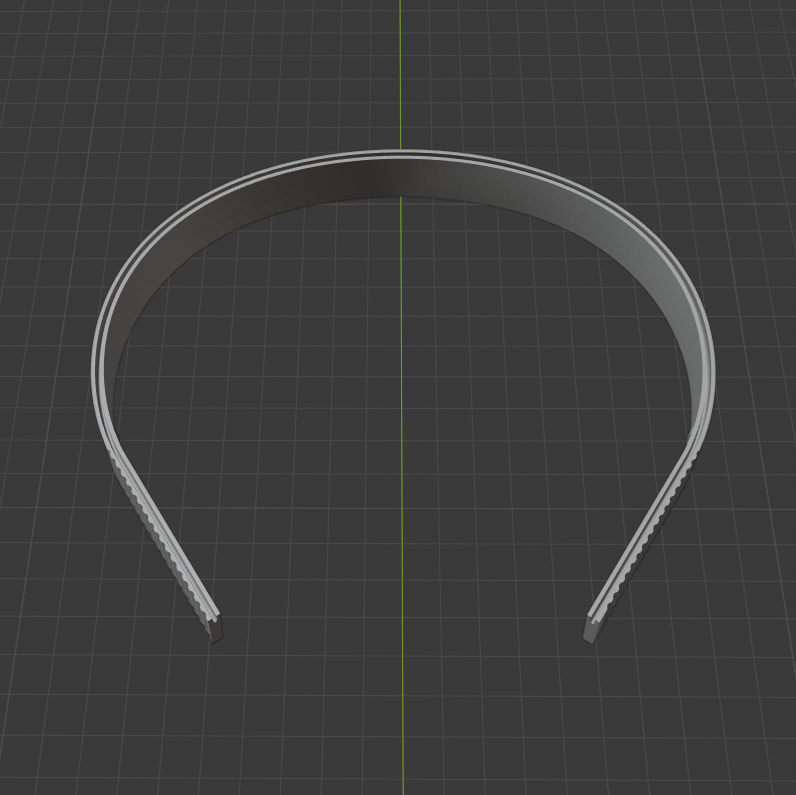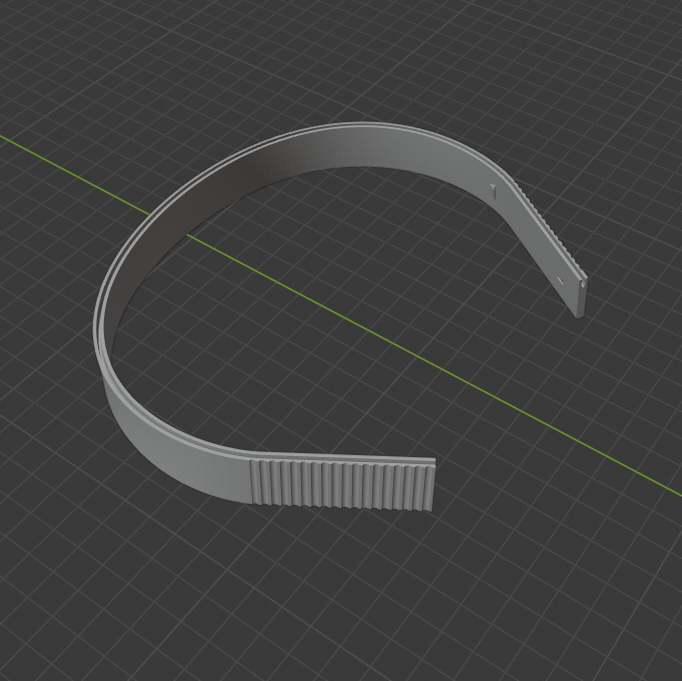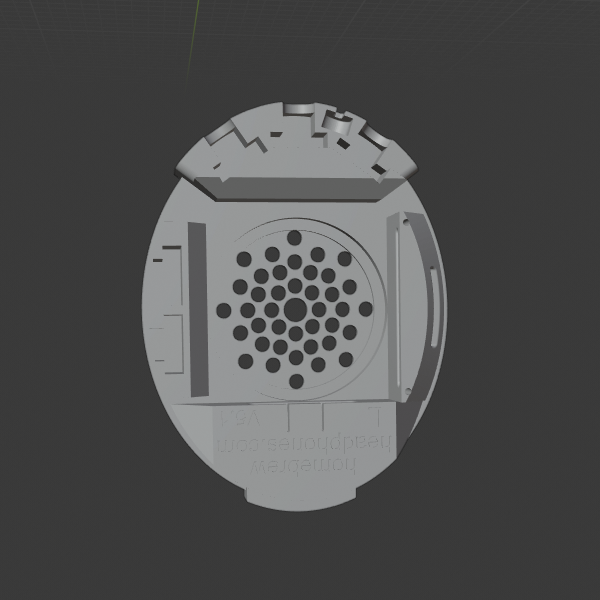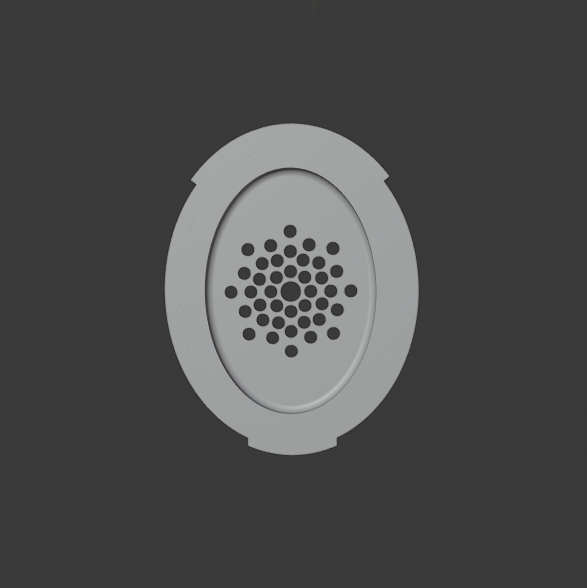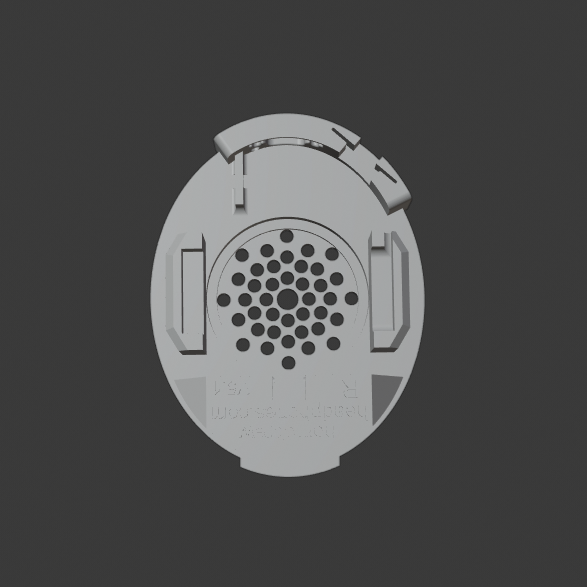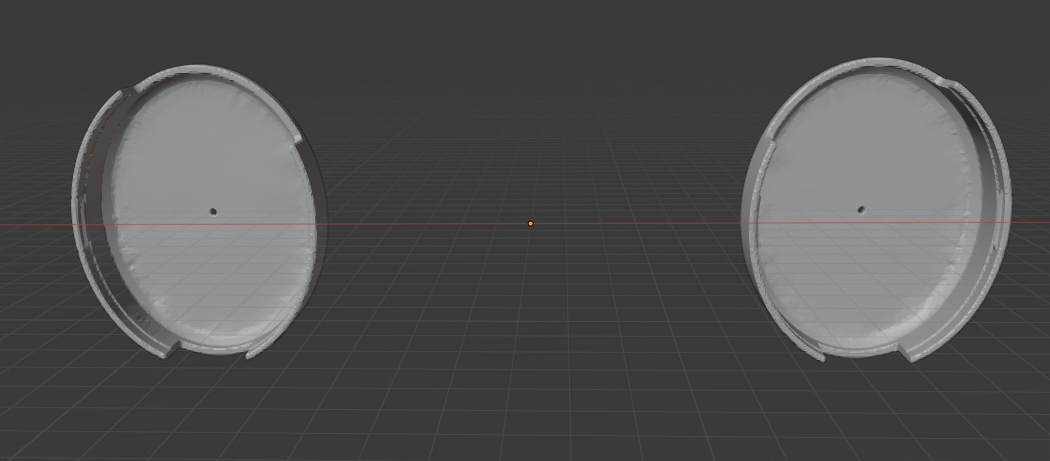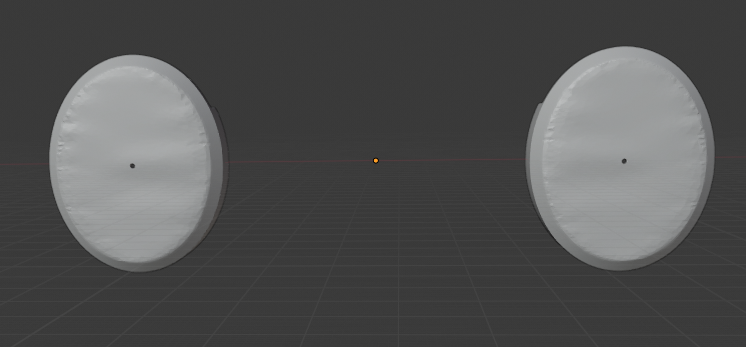Headset
The stl files for the headset can be downloaded below. As campus was shut down for coronavirus, we were not able to print and test any designs past mid March. As such, we have adjusted this design to suit our purposes. Additionally, this is only designed as a rough prototype, not as a final, sellable product.
Headband
The headband has an open groove along one side for the wires to lay in. The wires can simply be lain in the groove and be taped in place for the prototype. For a marketable version, the headband would have the wires on the interior, meaning the headband would most likely need to be screwed shut. Additionally, the final version would have a place for padding at the top and notches at the sides to adjust the band length.
Baffles
The baffles are the part that seperate the audio driver from the user's ears. The audio driver gets set into the back of the baffle and the ear cushions get laid over the front. The baffles and covers have a couple gaps in the sides so that button interfaces can be placed into the headset.
Covers
The covers go over the back of the baffles and seal off the audio drivers, circuit boards, padding, and buttons. The biggest change we needed to make to the working design we found online was that there needed to be a small hole in the cover for sound to enter for the ANC microphones.
Additional Parts
Aside from our circuit boards and electronics, the headset also needs ear cushions. Additionally, the inside of the ear pieces should be filled with cotton or some other type of padding in order to keep the parts in place and help prevent the sound from the drivers reverberating off of the back of the ear pieces. Finally, for comfort, some padding should also be secured around the headband.
